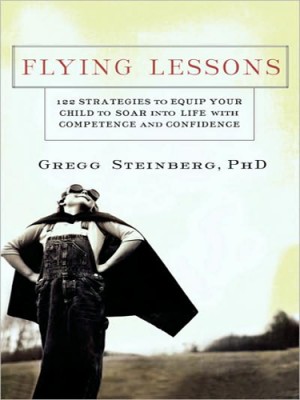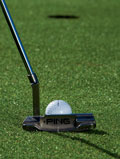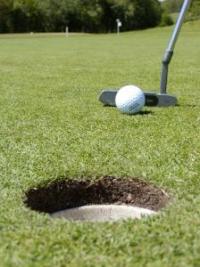$20.00 $15.00
61 strategies of how the world’s greatest golfers play their best under pressure.
Endorsed by Hank Haney (Tiger’s coach) as well as many others. Hardcover. Signed copy.
Mental Rules for Golf

61 strategies of how the world’s greatest golfers play their best under pressure.
Endorsed by Hank Haney (Tiger’s coach) as well as many others. Hardcover. Signed copy.
MentalRule: Wear the red shirt
“I have always thought that the actions of men are the best interpreters of their thoughts” – John Locke(75)
We all have seen Tiger wear his red shirt on Sunday, but why did he adopt that behavior? Is it simply a ritual or does it serve some greater purpose? Actually, it does serve a greater purpose for Tiger’s game. Tiger feels more aggressive when he wears his red colored shirt. He knows he must play aggressively on Sunday if he is to go “low” and win.
The key question is “How does wearing a red shirt make Tiger feel more aggressive on the golf course?” More importantly, how can Tiger’s red shirt help your golf game?
To answer this, we must first examine the color red. Typically, red stands for aggression and assertiveness. As a prototypical example, the matador uses a red cape to make the bull more aggressive and charge at him. Red also stands for fire and when you are fired up you are going to act more assertively.
The second reason why wearing a red colored shirt makes Tiger act more aggressive relates to the foundation of self-perception theory. Put simply, this theory states that we infer our emotions from our actions. Our brain gets the message from our body how to feel. Take smiling as an example. When we smile, we just feel happier. Even faking a smile will make you feel happier. We infer that we are happy because we our smiling. In the case of Tiger Woods, the action of putting on a red shirt on Sunday makes him feel more aggressive and fired up to go low on Sunday.
The principle of Tiger’s red shirt can have a huge impact on your golf game and golf attitude. Let’s apply this principle to building confidence about your golf game. There are many ways to become more confident, but one main one is by simply acting confident. How we act on the golf course after a missed shot or putt can greatly impact how confident we may feel for the next couple of holes. For instance, walking off the green with the shoulders slumped and the head down after missing an easy putt will make the golfer feel less confident in subsequent holes. This golfer infers from his body language (slumping shoulders) that there must be something wrong. On the other hand, if a golfer just had a disastrous hole, yet can still hold the head and shoulders high, a loss of confidence is less likely to occur.
If you want to feel more aggressive on the golf course, wear a red shirt like Tiger. If you want to feel more confident, you must strut your stuff no matter what happens on the hole. If you want to have more fun, just keep smiling
MentalRule: Focus on yourself
“No man (or woman) can make you feel inferior without your consent” – Eleanor Roosevelt
The human condition is to be concerned about what others think of us. In fact, the number one fear in our culture is public speaking. Most of us get extremely nervous when we have to speak in front of our peers. Our heart rate goes sky high, our head starts to pound, and at times, some of us will forget everything we had prepared. All this nervousness stems from our concern about the impression we give to others. Our greatest fear is to stand in front of others and look like a fool.
Unfortunately this concern about how others think carries over into our golf game and can ruin our play. The story of Ian Baker-Finch’s career illustrates this point exceptionally well. Baker-Finch won the British Open in 1991, but within seven years of his victory had retired from professional golf. Many factors contributed to this decision, one being his humiliating open round of 92 at the British Open at Troon and another being his missed 32 straight cuts on the tournament trail. However, Baker-Finch mentioned that the main straw that caused him to leave the tour was the pressure of what everyone was thinking about his poor play. Poignantly, he stated “What I would like to be able to do is to change my name, come back in a different body and go play without the pressure of being Ian Baker-Finch.”
Another similar story involves Hale Irwin playing with a young green horn named Mark O’ Meara, On this day, O’Meara was playing terribly and was ashamed about how bad he was playing in front of his older more seasoned pros. After the round, he went up to Hale Irwin and apologized for his bad play. Irwin flat out stated that he did not give a damn how his playing partners shoot, he was only concerned about his own play.
Next time you step on the golf course, be like Hale. Focus only on yourself. Do not worry about what other people are thinking because I guarantee your friends are not worried about you, your score, or your herky-jerky swing. They are doing what you should do. They are thinking only about themselves and how fantastic they look in their new golf sweater.
MentalRule : Zen and the art of golf
“I never worry about the future. It will come soon enough.” – Albert Einstein
Phil Jackson is known as the Zen coach of basketball. He drew from Native American religions and Zen Buddhism to help guide the Chicago Bulls to six world championships and the Los Angeles Lakers to three consecutive titles. One of the main philosophies of Buddhism is staying in the moment. Buddhists believe that regardless of how fleeting the moment, the moment is now and it should be appreciated with all your heart and energy. Such a philosophy promotes letting go of all your doubts and worries which allows you to concentrate all your energies on the present task at hand.. Phil Jackson shared this wisdom with his players and used these principles as part of his coaching techniques.
Michael Jordan is one of Phil Jackson’s disciples who took this philosophy to heart both on and off the basketball court. Michael believes in playing for the moment and has stated, “Each time I step on the basketball court, I never know what will happen. I live for the moment. I play for the moment” Michael Jordan also noted that being purely wrapped up in the moment has allowed him to play basketball without any self-criticism or doubt or inhibition of any kind.
Comparable to Michael Jordon’s talent on the basketball court was Bobby Jones’ ability on the golf course. Although Bobby Jones did not recognize it as a Zen philosophy, he followed the principle of playing for the moment and believed that this was key to his great play. He stated, “It is nothing new or original to say that golf is played one stroke at a time. But it took me many years to realize it.”
Another all-time great who followed the Zen philosophy was Walter Hagen. While he was known for his flamboyance, he also had a great golfing mind. He knew he was going to miss a lot of shots, but he knew it was essential to focus on the next shot and let go of the past. In words of timeless wisdom, he once commented “If you worry about the ones you missed, you are going to keep missing them.”
Today’s successful professionals also know the importance of being in the moment. Lee Janson, winner of two U.S. Opens attributes a lot of his success to his playing golf in the moment Lee recognized that the main reason for his winning the 1993 U.S Open at Baltusrol was that he did not allow himself to look beyond the shot he was playing. (3)
Many instructors also express Zen philosophies in their teachings. One such instructor was Harvey Penick. Most know him as an author and teacher of such golfing greats as Mickey Wright, Ben Crenshaw and Tom Kite.. One of Harvey’s bits of pure wisdom that he taught all his students was to “Take Dead Aim”. This phrase means you should pay your very best attention to what you are doing in the present moment without any fear or doubt.
Unfortunately, there are times when even the best golfers lose their Zen. It happened to Michael Campbell at the 1995 British Open. He was leading the tournament with rounds of 71, 71 and an incredible 65. That Saturday night he lay in bed awake thinking of all the consequences of his winning the tournament. He thought of the benefits to his finances as well as how a win at a major would change his life forever. He focused well ahead of himself and he paid the price with a 76 on the final day, finishing third.
There is an old Buddhist saying, “When an individual tries to catch two birds with one stone, he usually ends up not catching any”. Focusing on past follies or wishful rewards on future holes decreases the chance of catching any type of bird in the present moment.
MentalRule: Winners imitate winners.
“Study the actions of illustrious men to see how they have borne themselves, examine the causes of their victories and defeats, so as to imitate the former and avoid the latter.” – Machiavelli
Let’s see how good you are at golf trivia. Who won the 1986 Masters?
Jack Nicklaus.
Okay that one was easy. Try this one “Who was paired with Jack on Sunday?
It was Sandy Lyle. And do you know what happened to Sandy in 1988?
He won the Masters Now try your talent at golf history one more time. Who won the 1978 Masters? This one is a little tougher, but many golf trivia buffs would have gotten this one as well.
It was Gary Player. Here is the harder one. Who was paired with Gary in the last round? Here is your hint: It was a young Spaniard.
Yes, Seve Ballesteros had the fortune of watching Gary Player birdie the last 7 out of 10 holes to win. In the following year, Seve won his first major, the British Open, and in 1980, he won his first Masters.
Although Seve and Sandy may have lost in the short term on those Sundays in 1978 and 1986 respectively, they learned a more valuable lesson. They both were fortunate enough to watch and learn how two all-time greats handle the intense pressure of the back nine at Augusta National.. And they both learned their lessons very well.
While you may never play the final round at the Masters with the eventual winner, many golfers compete in tournaments and will have the opportunity to play with excellent players in those situations. Or, you may be lucky enough to play with your club champion during a competitive Saturday game. When these situations occur, observe these experts very closely. Watch their mannerisms and see how your patterns of behavior may be different from theirs. Most likely, you will notice that the excellent player remains focused and calm during the intense pressure. They also will keep to their routine regardless of the situation.
Do more than just observe. Once you have learned some important behaviors, pattern your actions after them. Winners imitate winners.
MentalRule: Find your purpose
“What other people find in poetry or art museums, I find in the flight of a good drive : the white ball sailing up into the blue sky, reaching its apex, falling and finally dropping to the turf, just the way I planned it.” – Arnold Palmer
Golf in the Kingdom, one of golf’s most famous spiritual novels, is a story about a student who plays a magical round of golf in Scotland. Most of the action takes place one night and is about the mentoring of the student around the course by a mystical caddie named Shivas Irons. But the book developed a huge following because it is more than just a story about a round of golf. Michael Murphy, the author and follower of Eastern philosophies, illustrates that golf can be a vehicle for human growth. Golf sets us on a path of self-examination as well as gives us a life direction when perhaps there is none.
Hal Sutton’s kingdom is the golf course, but for a while he lost his crown. Hal Sutton was touted as the next Nicklaus in the early 1980’s. He was a good looking kid with talent to match. In his first five years on tour, he had seven wins, including a win at the tournament of champions, as well as a win at the PGA championship where he out-dueled Nicklaus. With all that success, there was money, fame and beautiful women. Clearly, he was sitting on top of his throne for a time.
However, by the early nineties, his game fell into the dungeon of despair. All the fame and fortune seem to have sent Hal on a direction that appeared to lack meaning and purpose. As a result, Hal’s game quickly plummeted, and in all his confusion, he fired his long term coach, Jimmy Ballard, as well as his long time caddie. After that, things got even worse. He nearly lost his playing privileges on the tour and by 1993, he had hit rock bottom.
As Michael Murphy tried to demonstrate in his novel, golf then gave Hal a more precious lesson that money or fame could ever buy: The game forced Hal to reexamine himself .The game placed Hal on a path of self-discovery that led to his questioning of his ideals, and values. What set the wheels in motion were four simple words his father had told him: “Find your pride, Hal”.
From this soul searching recommendation, Hal realized why he played the game. He finally discovered what his purpose was on the golf course. It was not for money, it was for pride and for the love of the game. With this new self-awareness, he began his ascension back to the top ranks in the game. By the late 1990’s, he was again a top player on the PGA tour. He even won the 1998 Tournament Players Championship where he out-played Tiger Woods in the final round.
Finding meaning enables you to tap into inner strengths, resources, abilities, and energies that you did not know existed. In the C Zone, Robet Kreigel interviewed 500 top performers from all areas of business, creative arts and sports and discovered they all had a purpose and were passionate about that purpose. Kreigel has written that a meaningful purpose is the single most important quality that will lift a person head and shoulders above the rest in tough times. It brings the whole being into play and centers your energy toward overcoming any arduous task.
Why do you play this great game called golf? Is it for recognition? For money? To hit great shots? To be with friends? To walk in nature? To win a $2 naussau from your friends? For pride and love of the game like Hal?
Once you find your meaning, then have an attitude and practice schedule that fits this purpose. If it is to be with friends, then make sure you enjoy the walk. If it is to be with nature, then make sure you smell the flowers along the way. If it is for recognition and money, you better start pounding balls.
Additional information
| Weight | 2 lbs |
|---|---|
| Dimensions | 10 x 8 x 2 in |




